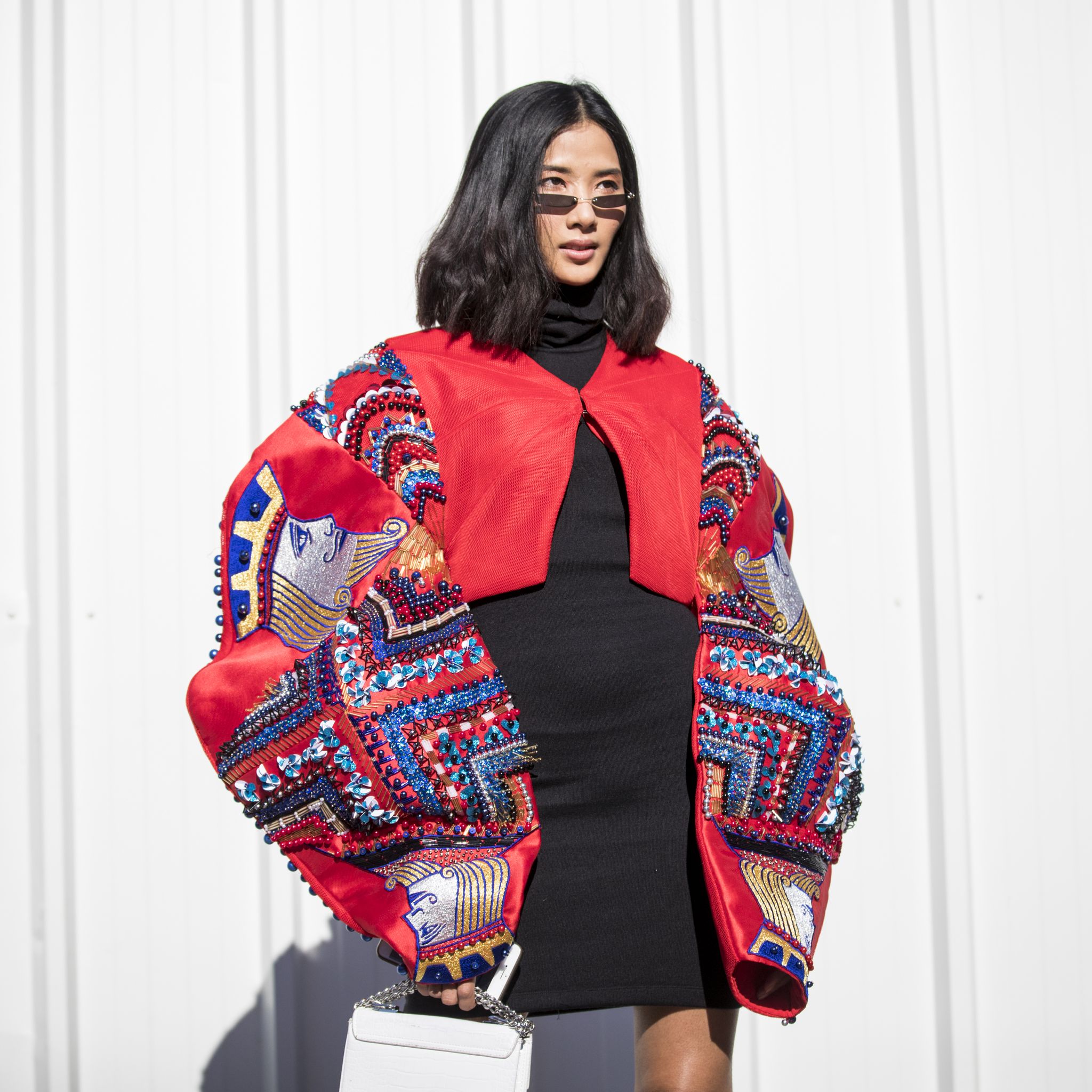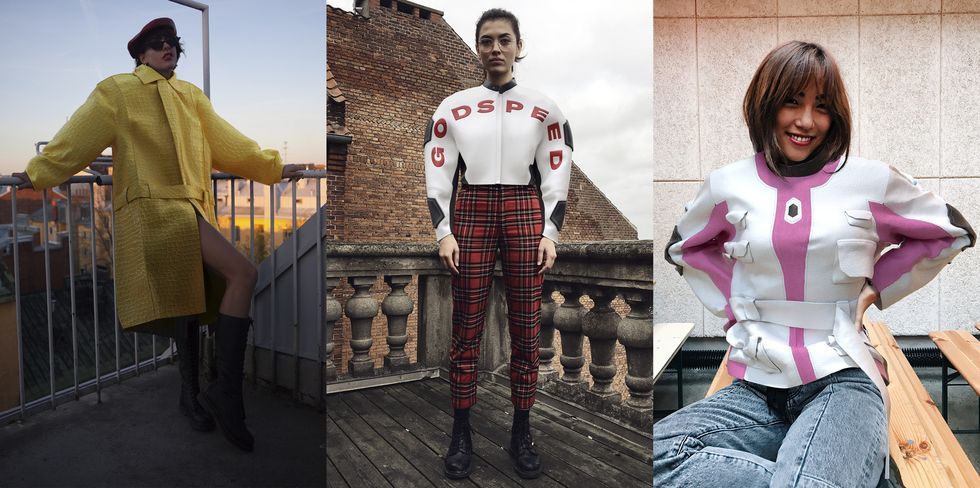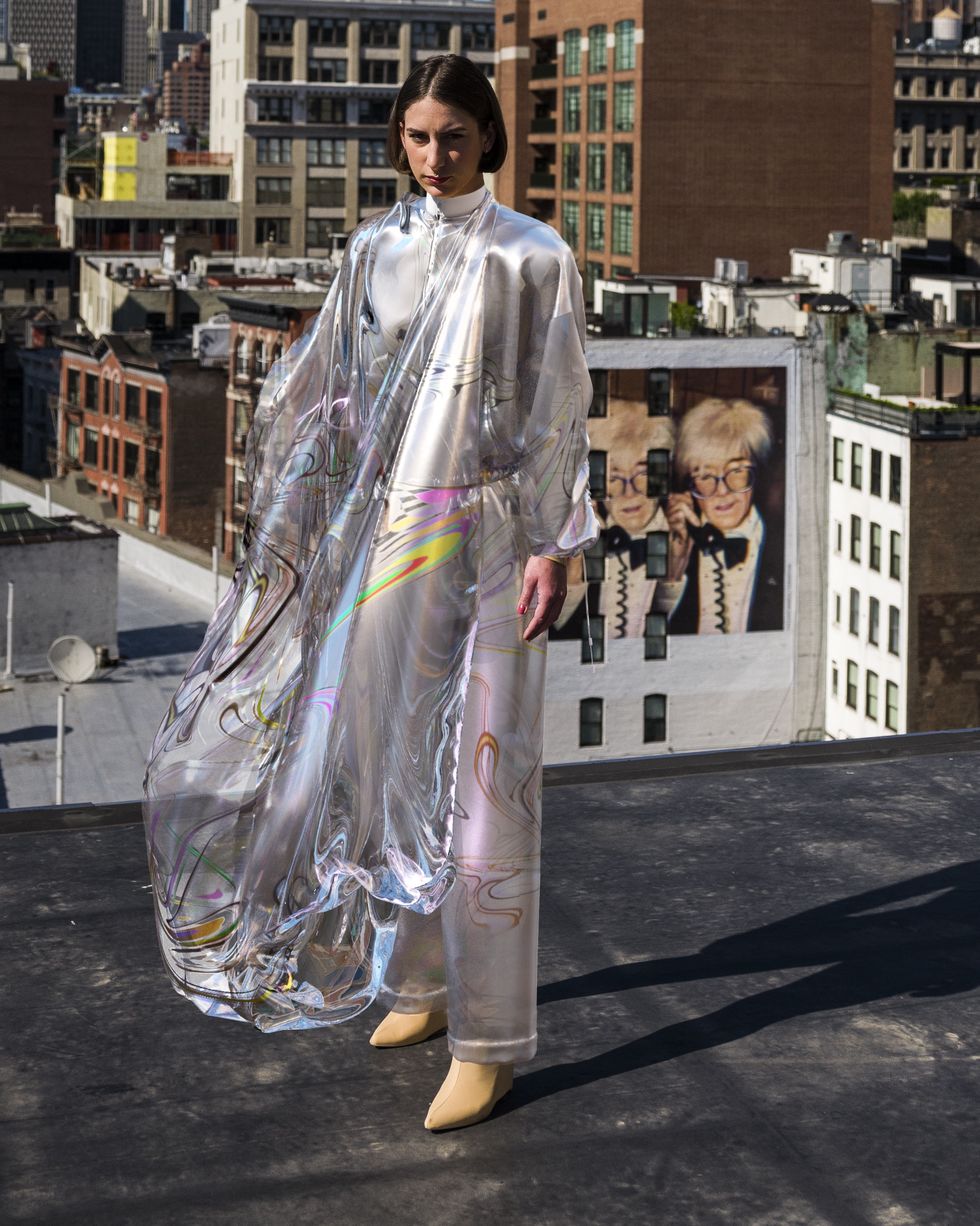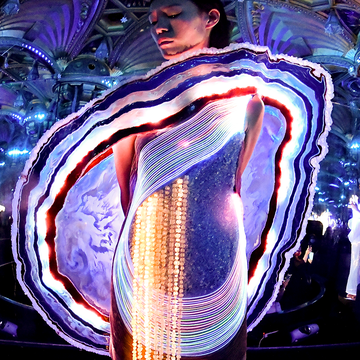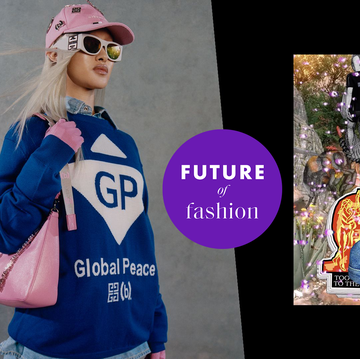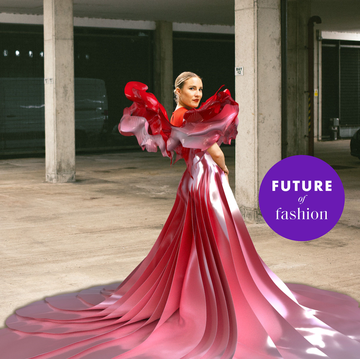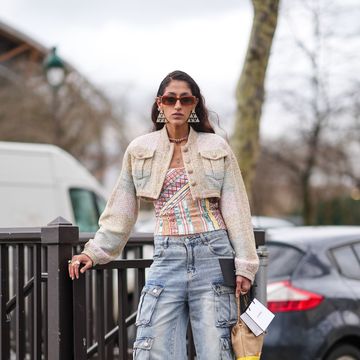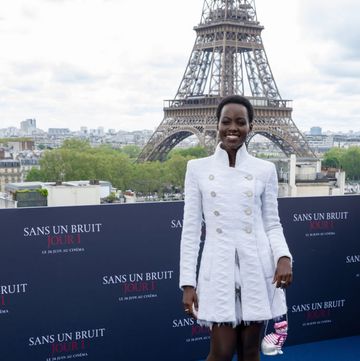Picture this: you’re browsing online and a statement jacket suddenly catches your eye. Metallic, with flashes of lime green; it's unlike anything you’ve seen before. After some umming and ahhing, you decide to buy it. Instead of ever seeing it in person, though, you supply a photo of yourself and the same image is then sent back with your newly purchased jacket edited onto you.
Yep, you read that right. You will never touch that jacket, or try it on, but you can wear it 'digitally' and rake in the likes all the same. This might sound like the premise of a Black Mirror episode, but, thanks to Norwegian company Carlings, it's very much a reality.
And as a practice, it's becoming increasingly popular.
In reaction to reports of influencers buying one-off outfits solely for Instagram, Carlings launched its first digital-only collection last November. Titled ‘Neo-Ex’, the collection was inspired by video games like Tekken, and featured a bright yellow crocodile skin coat, blue latex chaps covered in computer code print and a black visor emblazoned with the slogan ‘Eat The Glitch’.
After you purchase an outfit from the 19-piece collection for £9-30, a group of 3D designers will digitally ‘fit’ the look onto a photo of the buyer, ready to post on social media. Kicki Perrson, brand manager at Carlings Sweden, says the response has been overwhelmingly positive and the company plans to drops its second digital-only collection this summer.
'In real life, these types of designer clothes cost thousands of pounds and will usually be worn on social media once because of their distinct design,' says Persson.
'By selling the digital collection at £15 per item, we’ve sort of democratised the economy of the fashion industry and at the same time opened up the world of taking chances with your styling, without leaving a negative carbon footprint.'
Influencer Daria Simonova, who modelled the collection’s puffer jacket and lightning bolt-embellished jeans to her 58k followers, said she would definitely buy more digital clothing in the future.
'I really love this idea because firstly, it’s environmentally-friendly and secondly, clothing nowadays is more like an art form for social media. Digital clothing is super convenient, and the design potential is huge because it’s way cheaper.'
Could virtual luxury fashion ever take off?
It's no secret that our fast fashion habit is causing irreparable damage. The industry contributes more to climate change than the yearly emissions of air travel and sea travel combined. While we should all be aiming to consume less, and recycle more, what if you could buy a look that had zero environmental impact?
The concept might seem outlandish, but the fashion industry is actually late to the party. Gamers have been spending real money for years. As Matthew Drinkwater, head of the Fashion Innovation Agency at London College of Fashion points out, Fortnite fans rack up millions of dollars on skins for their avatars.
'The money being spent on virtual content in the gaming industry is huge,' explains Drinkwater, 'and the fashion industry is only just beginning to realise that there might be an opportunity there.'
One such brand is Moschino, who recently launched a Sims-inspired capsule collection complete with green diamond-printed swimsuits. The launch was also accompanied by the release of a virtual version of the capsule’s Freezer Bunny hoodie for all of the current Sims titles, so that your Sims can be kitted out in Moschino too.
Kerry Murphy, founder of The Fabricant - an Amsterdam-based ‘digital fashion house’ that creates hyper-real virtual clothing for fashion brands and retailers - thinks it won’t be long until we see a luxury brand do a completely digital collection.
'We’re already in talks with some brands who are thinking about digital-only drops and starting to adopt this digital-only way of thinking,' Murphy says.
But could virtual luxury fashion ever take off? Last May, in New York, the world’s first piece of ‘digital couture’ was sold at a charity auction for £7,500 ($9,500). The iridescent, translucent one-piece was designed by Amber Jae Slooten, creative director at The Fabricant, to be fitted onto a photo of the owner.
'As technology improves and the photo-realism of what you can create gets better, you start getting to the possibility where the desirability of digital clothing could become on a par with the real thing,' says Drinkwater.
'People might even be prepared to spend more - or as much - money on digital clothing as they would do for real, physical clothing.'
Creative possibilities begin to spring up, too. For designers and brands stuck in specific way of creating, you can push the boundaries without the anxiety of blowing a budget. 'Suddenly those harnesses are released and you can begin to go beyond what anyone has ever seen before,' adds Drinkwater.
Slooten, whose background is in fashion design, says she became acquainted with 3D modelling five years ago and fell in love with it. 'It’s fantastic. There’s no material wastage, you can create anything and as a designer, it's a very new way of working,' she says. 'It's like sculpting your way around the body instead of creating a pattern and then sewing and putting it together.'
The tangible joy of fashion
While Drinkwater thinks we are still at least five to 10 years away from digital clothing being commonplace, we have a long way to go.
Despite offering a possible solution to our culture of disposable fashion, doesn't digital fashion fall into the same trap? You'll not only (likely) post once before relegating that over-sized blue puffer jacket to the back of your virtual wardrobe, but are actively encouraged to do so.
And then there are the influencers. While the proposition of designer-worthy outfits that can be fitted to your particular body regardless of its shape is no doubt a tantalising one for people with giant followings (and the compulsion to post new like-garnering content on a daily basis), it's hard to imagine it having the same pull for people who don't spend every waking minute on Instagram.
'As a regular punter, surely you really want to wear [your clothes] because nobody really sees your pictures on Instagram?' asks Shonagh Marshall, New York-based fashion curator.
Really, though, when so much of the joy of fashion is in dressing up, could we really have the same emotional connection with something that doesn't even exist? The tactile experience of running your fingers over a satin dress is what makes it so joyous.
Instead, Drinkwater thinks we'll start to build an 'entirely different' relationship with our clothes. 'With the proliferation of high street stores where everybody is pumping out huge volumes, but every store is the same, it’s made the world very boring. I think the element of exclusivity that you could create through digital clothing is something that could build that desire and actually return a sense of how we used to shop.'
Still, Murphy believes that digital clothing is inevitably the next frontier in fashion.
'It's crazy to deny that our lives are becoming more virtual and that we are moving towards a more digital existence, especially with the popularity of virtual influencers like Lil Miquela (with 1.6 million Instagram followers),' he says. 'People are following her like any soap opera on TV, but two years ago, everybody was saying that’s ludicrous as well!”
However you might feel about virtual clothes, there’s no ignoring that the industry needs a serious overhaul. Digital fashion could potentially pave the way for a more sustainable business model – one where our overconsumption of worn-once clothing is drastically diminished. Post and save the planet at the same time? We're here for it - whether we actually get there remains to be seen.
